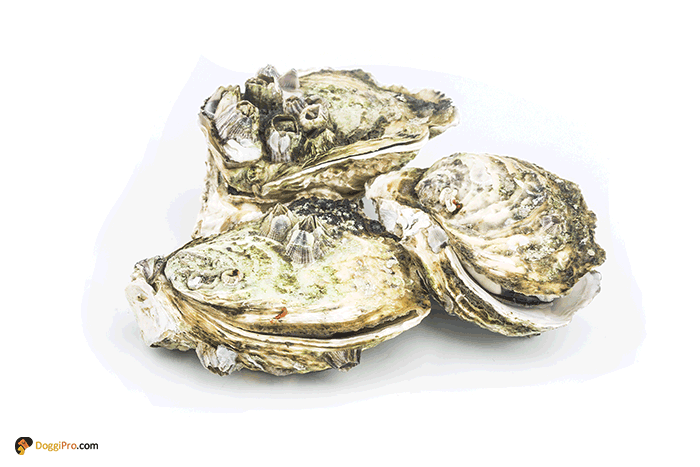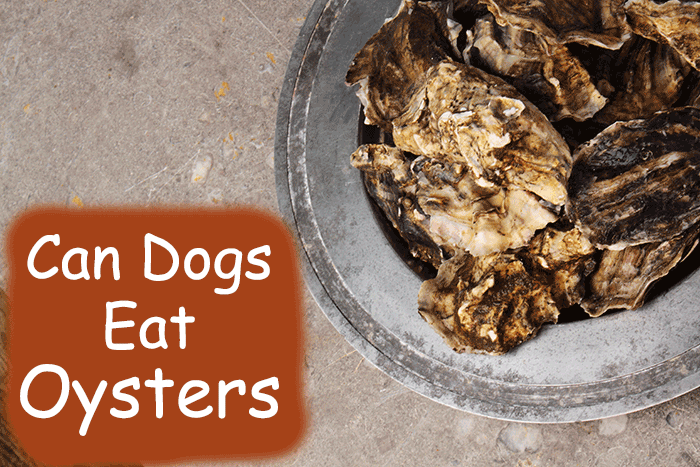Many people love oysters, but can our canine friends enjoy them too? Dogs are omnivores, so that they can digest and metabolize animal protein and plant carbohydrates. Being an omnivore means that they can technically eat oysters, but whether or not it is good for them is another story. While a small amount of oyster meat is not likely to harm your dog, some things to consider before letting them indulge.
Can dogs eat oysters? Raw oysters are not recommended for dogs because they are high in salt, cholesterol, and fat, leading to obesity and other health problems. However, there are some exceptions where it is safe for your dog to eat oysters. Dogs should only eat cooked oysters or freeze-dried oyster dog treats.
What are the Risks of Feeding Your Dogs Oysters?
Feeding your dog RAW oysters is the real danger. Raw oysters are a delicacy for humans, but they are not safe for dogs to eat. The main risk of feeding your dog oysters is indigestion. Since dogs have much smaller stomachs than humans, a dog would find it difficult to digest raw oysters. A dog’s body is also not equipped to process the high levels of sodium found in raw oysters. Feeding your dog oysters can result in vomiting, diarrhea, and fluid build-up around the heart. The risk is highest in smaller dogs because their kidneys are less able to handle the high levels of toxin found in grapes.
Simply feeding your dog raw oysters is a big no-no. But depending on your dog’s health, cooked and prepared oysters are quite healthy.
What are the Benefits of Oysters for Dogs?
Some vets believe that the health benefits of oysters outweigh the risks. The main advantage of feeding oysters to dogs is that they provide them with a healthy protein source.
Oysters are also rich in zinc, which boosts the immune system and can help fight off certain illnesses.
They also contain vitamin B12, which is essential for neurological function and maintaining the skin’s integrity.
Oysters are also rich in vitamin D3, zinc, and selenium. They also contain omega-3 fatty acids, which help with inflammation. Oysters also contain taurine, an amino acid that helps with cardiac health.

How to Feed Your Dog Oysters Safely?
As a pet owner, you should consider your dog’s current health status before feeding them oysters. Oysters are high in protein and low in carbs, which can be a problem for dogs with diabetes or other diseases like kidney disease.
If feeding your dog oyster dog treats, reputable brands will always have the ingredients listed on the packaging. Some dogs also have allergies to seafood, shellfish, or fish. If you’re unsure if your dog has any allergies to these foods, it’s best to speak to your vet about the best diet.

Raw oysters are a no-no. These can carry parasites, bacteria, and other potentially harmful substances that can damage your dog’s health. As a responsible dog owner, you should do your due diligence before feeding your pet oysters, even if they are cooked or come as doggy treats or snacks.
We can’t stress it enough make sure you know where the oysters, or any food, come from before feeding them to your dog, so you are sure the source is clean.
How to prepare oysters for your dog
Oysters may be the perfect choice to add a little variety to your dog’s diet, But before you let Fido chow down on these delicious seafood snacks, there are a few things you need to know.
Removing the shells
1. Start by holding the oyster in one hand, with the flat side facing up. Use your other hand to insert an oyster knife into the top of the shell.
2. Apply pressure to the oyster knife and twist it until the shell pops open.
3. Gently pry the two halves of the shell apart and remove the oyster meat inside.

Cooking the Oyster
Steam or boil the oysters until thoroughly cooked. Ensure they reach an internal temperature of at least 145 degrees Fahrenheit to kill harmful bacteria.
Don’t use oils or spices.
When preparing oysters for your dog, it is important not to use oils or spices as these can harm their health.
Once cooked, you can chop them into small pieces before adding them to your dog’s food bowl.
Before feeding the oysters to your dog, check again for stray shells, as these are a big choking hazard for your pet. And remember to feed them in moderation. Offer only small amounts or as a treat. As with any treat, monitoring your dog while eating oysters is important and ensuring they do not eat too many at once.
Conclusion: Feeding Your Dog Oysters and How to Do It Safely
To summarize, there are two ways to feed your dog oysters: raw or cooked.
Raw oysters can be a little tough for dogs, so we recommend you chop them up into smaller pieces first. You should also ensure that the oyster is not too salty or spicy because dogs have different tastes than humans and could find the flavors too intense.
Cooked oysters can be fed whole to your dog, but this way of feeding your dog is a choking hazard, so we encourage you to chop the oysters into small bits before feeding them to your dog. And make sure the oysters are cooked well before feeding them to your dog, so they don’t get sick from bacteria.
While oysters may not be the first food you think of feeding your dog, they can be a healthy and nutritious snack for them. Just be sure to monitor your dog closely while eating them, as they can pose a choking hazard. And as always, consult with your veterinarian before making any changes to your dog’s diet.
- Why Shih Tzu Are The Worst Dog: An In Depth Analysis - February 7, 2024
- Why Schnauzers Are The Worst Dogs (or Are They?) - February 7, 2024
- Can dogs eat gushers? The Answer Might Suprise You - January 26, 2024
